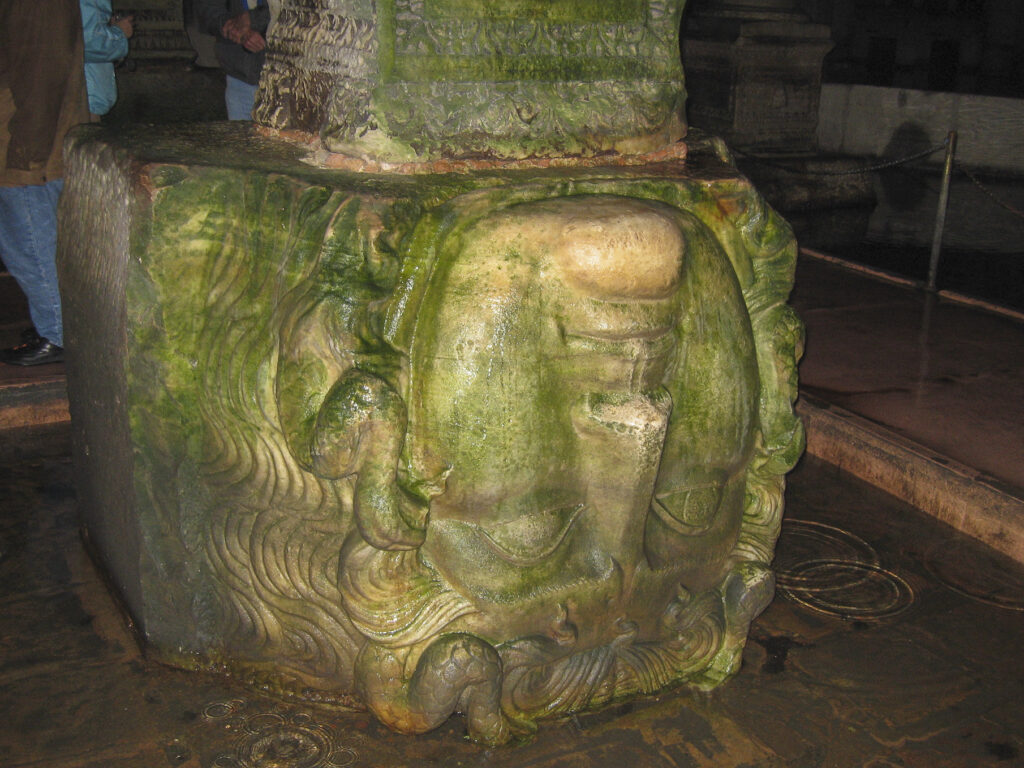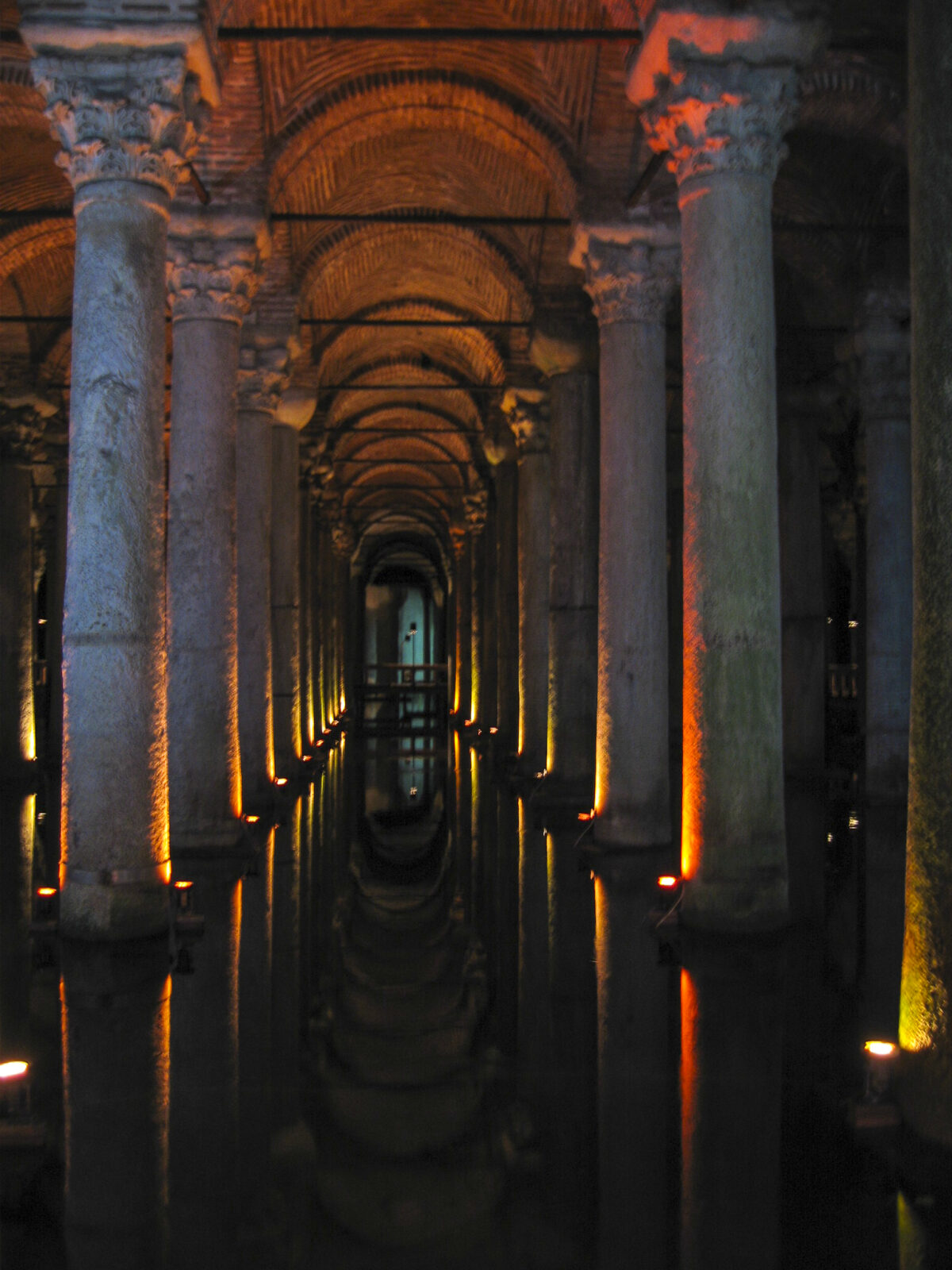A short walk from the Blue Mosque brought us to the entrance to the Basilica Cistern, or Yerebatan Sarnıcı in Turkish, perhaps the most offbeat of all the attractions we enjoyed in Istanbul. On the way, I was able to snap a couple of photos of the more representative sights of the city, such as the apartment buildings below.
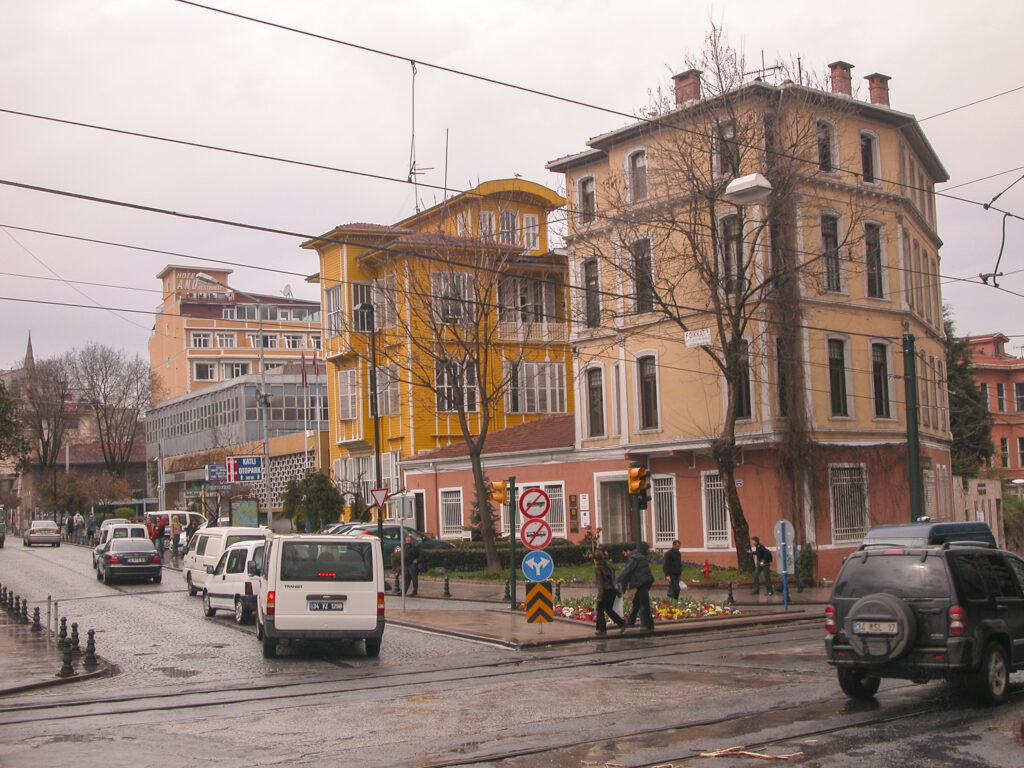
Along the way we discovered that Istanbul was a good place to find all kinds of old American cars, such as this 1956 Chevy sedan, shown in the next picture. Unfortunately, as I shot the picture a scruffy character, who was not the owner, but rather one of the homeless vagabonds populating the district, happened to slip into the field of view.
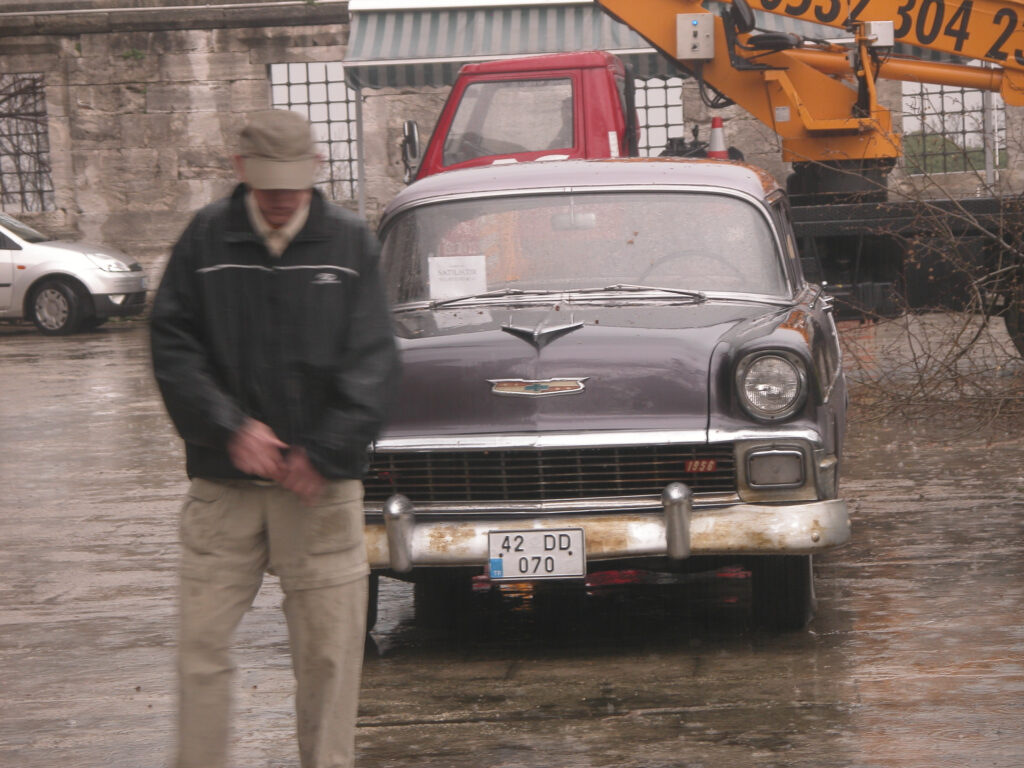
We descended a 52-step staircase into the underground world of the Basilica Cistern, so called because it was built on the site of the Basilica of Ilius, a great public building dating from the third or fourth centuries which was destroyed during the Nika riots of 532. Emperor Justinian then had the cistern built to ensure a reliable supply of fresh water to his Great Palace, as well as Hagia Sophia and other sites. There are a number of ancient cisterns in Istanbul, but the Basilica Cistern is the largest; it is immense, occupying an area of 105,000 square feet, or 9,800 square meters, and capable of holding 2,800,000 cu ft (80,000 cubic meters) of water. It does not actually hold that much water now; it is left mostly empty so that visitors can walk around it on the platforms and walkways built for the tourist trade.
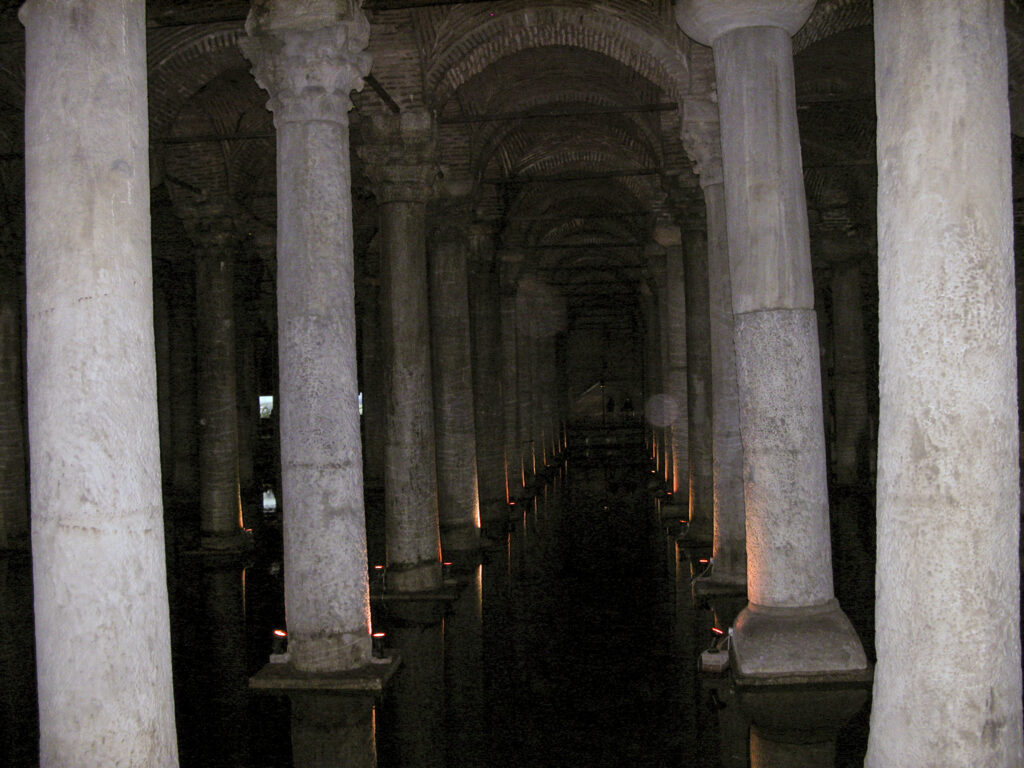
336 marble columns support the ceiling of the Cistern. Each column is 9 metres (30 ft) high. They are arranged in 12 rows of 28 columns spaced 5 metres (16 ft) apart. The columns are of disparate styles and origins; a few are Doric, the rest Ionic or Corinthian in style. They were not originally built for the cistern but rather plundered from other structures and brought to Constantinople from places all over the empire.
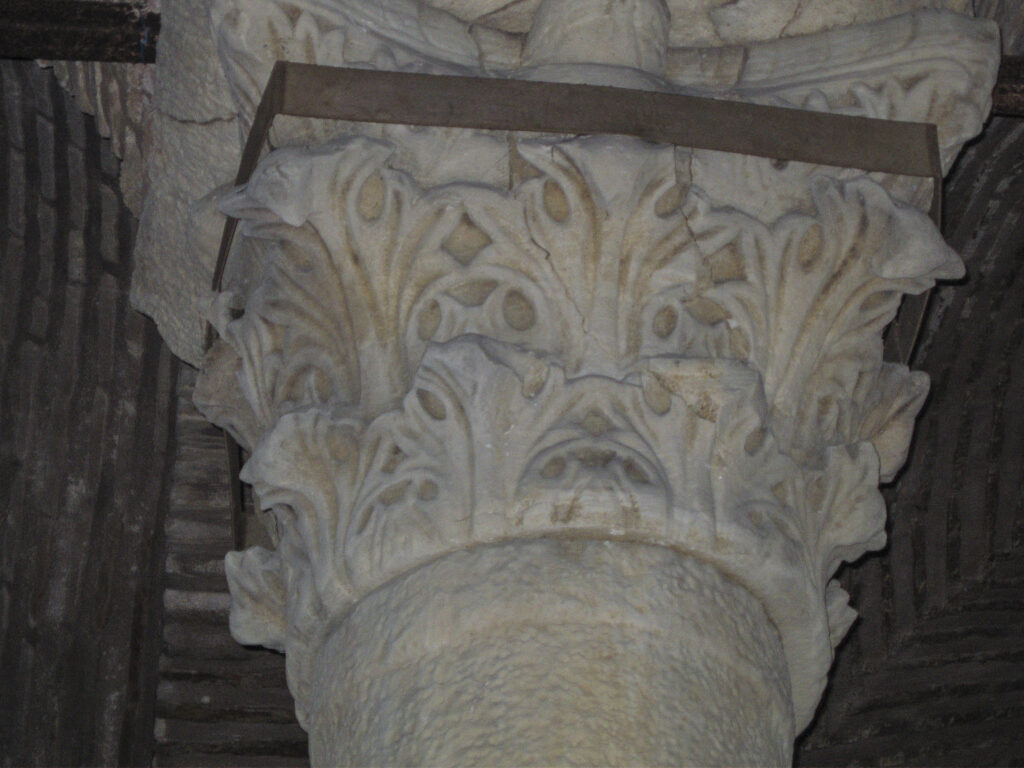
The Basilica Cistern has been featured in a number of movies, including the James Bond thriller From Russia With Love, in which Bond took advantage of its location under the Soviet Consulate to get access to a cryptographic machine. In reality, the Consulate is in the district of Beyoğlu, near our hotel but far away from the Cistern.
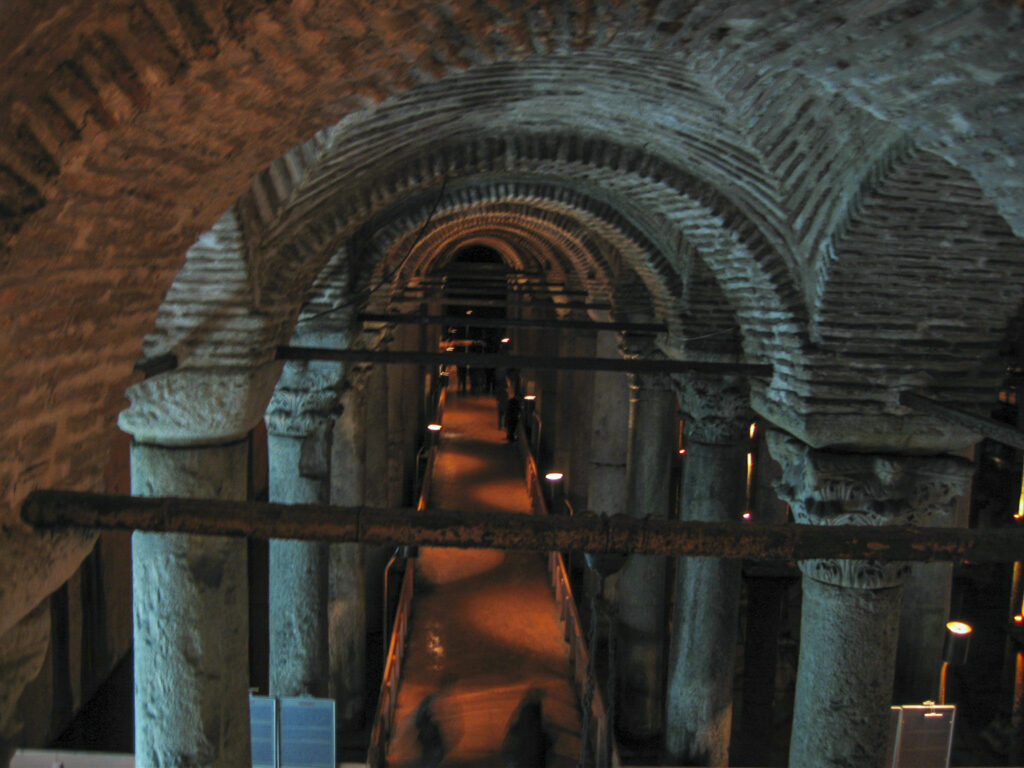
The walls of the Cistern are 13 feet (4 meters) thick, built of brick coated with waterproof cement. Water was brought to the Cistern from the Belgrade Forest, 19 kilometers from Constantinople, through Roman aqueducts. (Note: the Belgrade Forest is nowhere near the capital of Serbia, which is 952 km from Istanbul,)
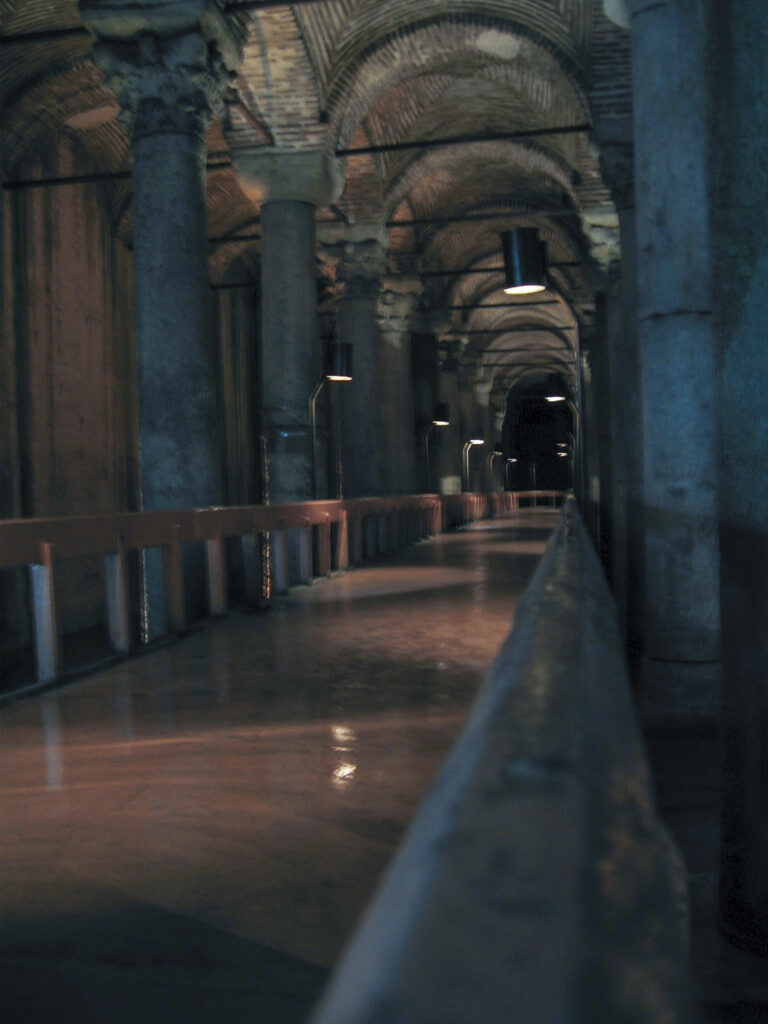
One of the columns is engraved with pictures of a hen’s (or peacock’s) eye, slanted branches, and tears. Supposedly the tears on the column commemorate the hundreds of slaves who died during the construction of the Basilica Cistern (over 7,000 slaves in all were said to have worked on the construction of the cistern, though presumably not all of them died).
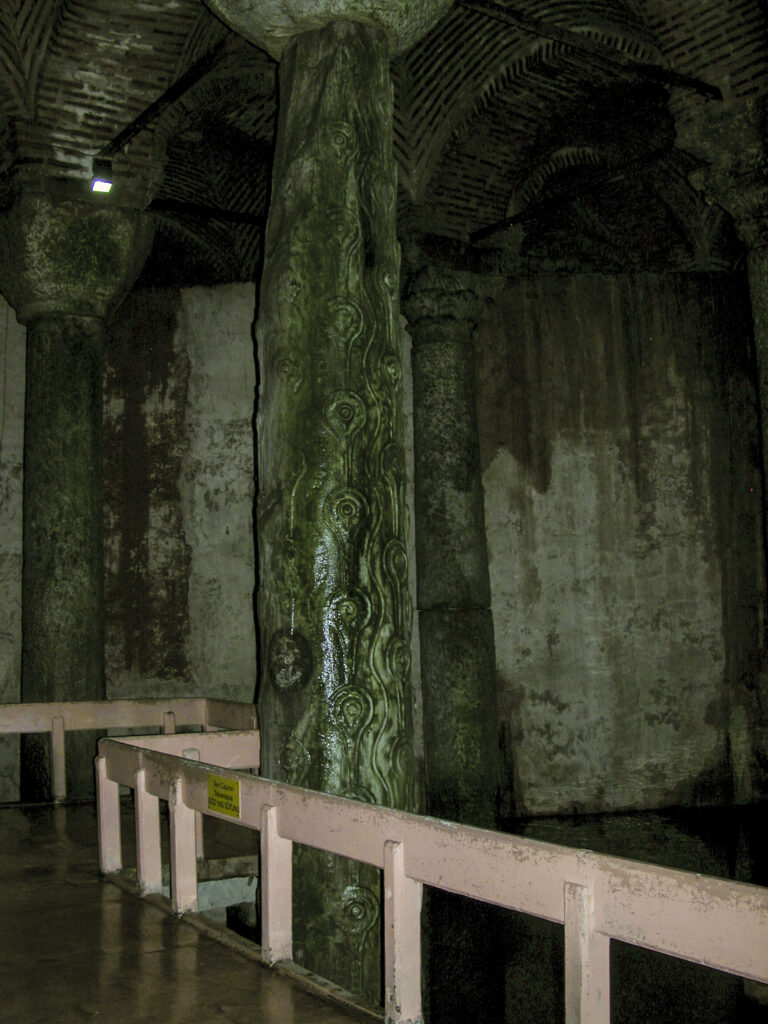
At the base of two of the Cistern columns are pedestals carved in the shape of Medusa’s heads. You will recall that in Greek mythology the Medusa was a woman who evoked the jealousy of the goddess Athena when she copulated with Poseidon, god of the sea, in Athena’s temple; in retribution Athena turned her into a Gorgon, a creature with the body and head of a woman, but with living venomous snakes for hair, whose gaze turned living creatures to stone. Eventually she was beheaded by the hero Perseus, who used mirrors to accomplish the deed without looking directly into her eyes. Perseus then took her head, which retained its power to calcify, put it in a bag, and pulled it out whenever he wanted to turn somebody into a statue. He used it to save the beautiful princess Andromeda, who was to be sacrificed to the sea monster Cetus. All three of them were later transformed into constellations in the sky, along with Andromeda’s parents, Cepheus the King and Cassiopeia the Queen. Medusa did not become a constellation but had a nebula named after her; you can see a picture of it in my astrophoto gallery, but remember to use a mirror if you look at it.
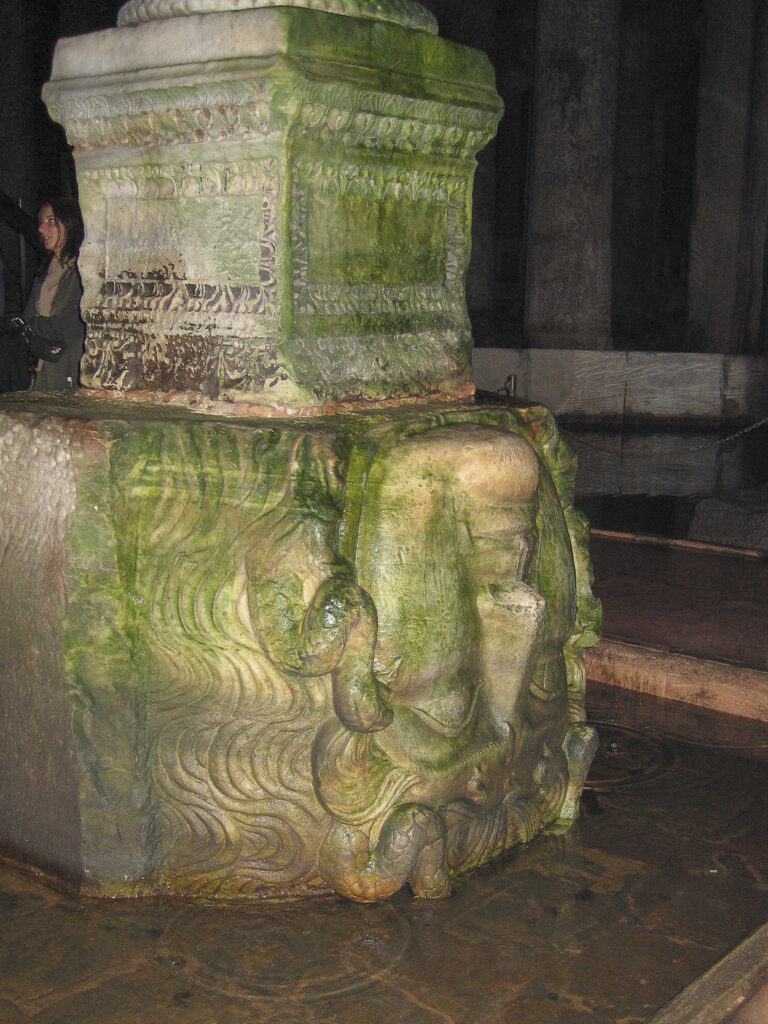
One of the Medusa heads is turned sideways because – so the story goes – only in that position was it the right size to support the column at the correct height to line it up with all the others.
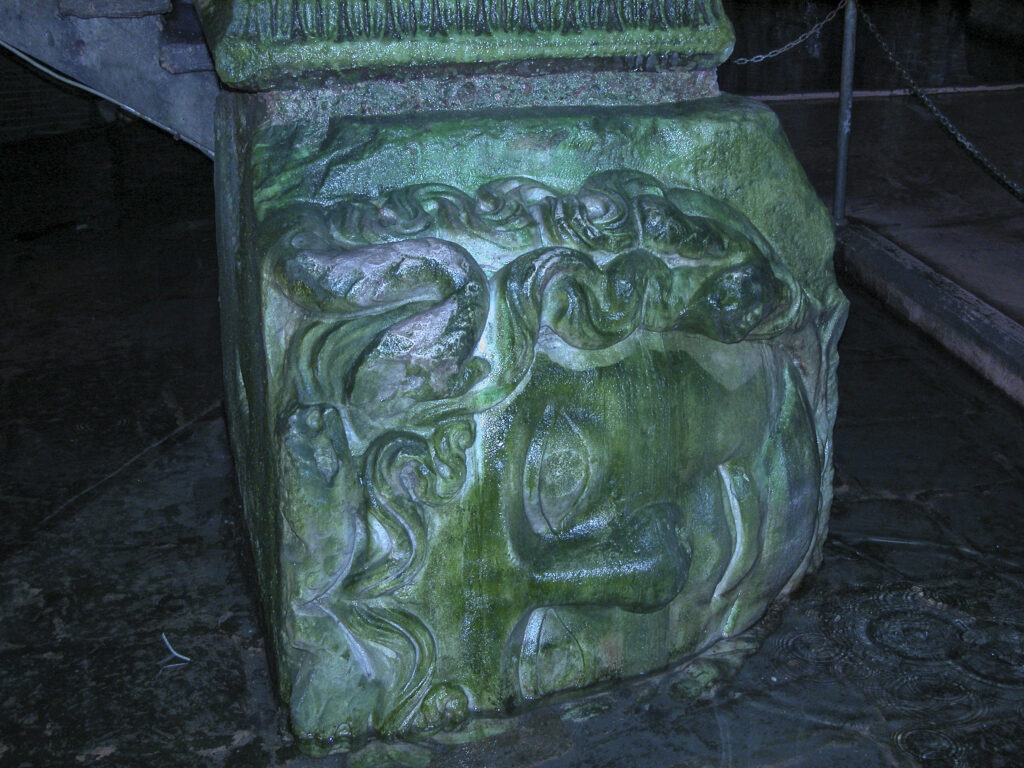
But that explanation doesn’t work for the other Medusa carving, which is upside-down, because it would be the same height if it were right-side up.
